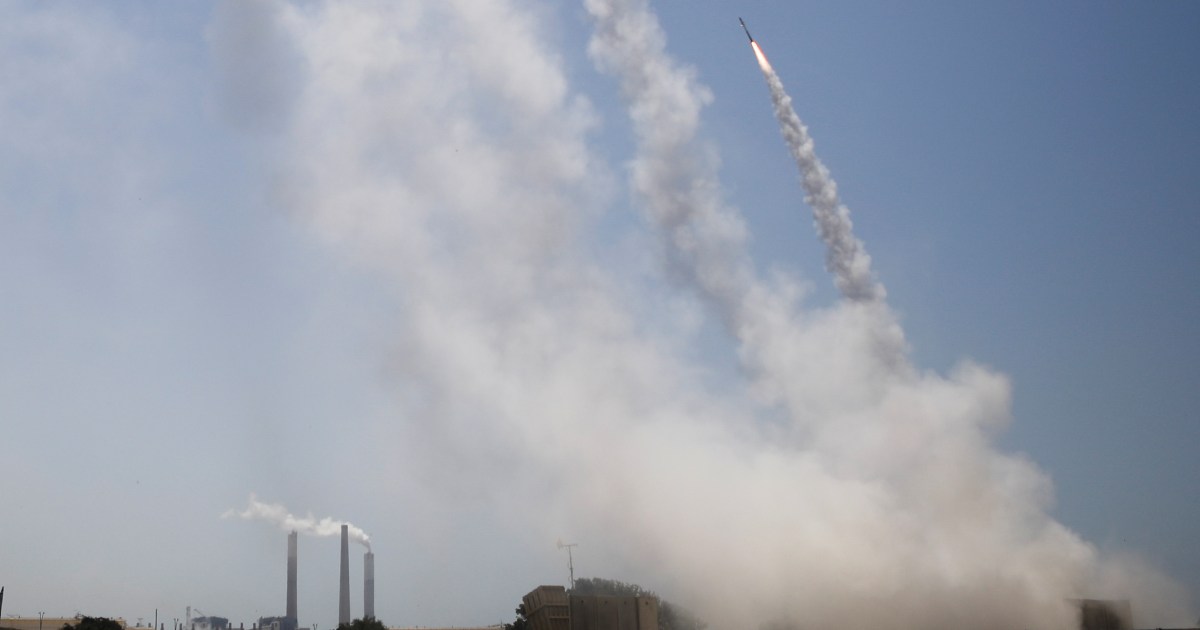The American National Interest magazine said that no conventional missile defense system, no matter how advanced, is completely immune to intense missile attacks, including the Iron Dome system that Israel uses to counter the missiles launched by the Islamic Resistance Movement (Hamas) and the rest of the Palestinian factions. From the Gaza Strip.
It stated - in a report - that this system, which is an interceptor network that uses advanced radar data analysis technology to monitor, track and destroy missiles, is Israel's first and main line of defense against the barrage of short-range missiles coming from the Gaza Strip.
She wondered about the effectiveness of this system, which is often described as one of the most effective interception systems in the world, in countering the Palestinian resistance missiles, stressing that it partly focuses - in order to save the cost - on missiles that travel in a specific path, which is a wise decision, especially in the context The current escalation, as about 400 of the 1,600 Hamas rockets fired by Hamas failed to reach Israel.
As for the rest of the missiles that approach their targets, the Israeli army asserts that the success rate in confronting and destroying them is more than 90%, a figure that has been questioned objectively in recent years, especially in a careful analysis done for the National Interest, assistant professor at the American Brook University, Michael Armstrong.
Even if this percentage is accurate overall - the magazine adds - there are data and precedents indicating that the Iron Dome is significantly less effective against strikes directed at short-range targets.
During the 2014 Gaza war, Iron Dome batteries struggled to intercept nearly 700 short-range missiles fired at Israel in a single day.
The magazine pointed out that the capabilities of the resistance factions - in the forefront of which are the Islamic Resistance Movement (Hamas) and the Islamic Jihad Movement - to direct massive missile strikes at the Israeli interior, not only have grown since that time, but the two movements have continuously adapted their tactics by launching rockets in low paths with the aim of Get better chances to penetrate the IDF's missile defense network.
Network penetration
It is believed that each typical battery in the Iron Dome system includes 3 to 4 launchers, each carrying 20 "Tamir" interceptor missiles, but it is not clear exactly how many batteries have entered service during the current conflict, although this number is not Less than 10, according to the National Interest.
The magazine believes that if both Hamas or Jihad launched a sufficient amount of rockets at a specific location within a short period of time, it could very well penetrate the Iron Dome network and inflict heavy losses on vital infrastructure or populated areas.
Adding more batteries may mitigate this potential security vulnerability in the short term, but resistance movements can in turn respond simply by manufacturing or acquiring more missiles.
This is not considered a weakness of the Iron Dome system as much as it is a reflection of the fact that no conventional missile defense system, no matter how advanced, is completely immune to intense missile strikes, although Israel has recently invested in a laser-powered air defense system called " Iron Beam promises to compensate for the shortcomings of the current system. It is too early to fully assess the effectiveness of the new system on the battlefield.

